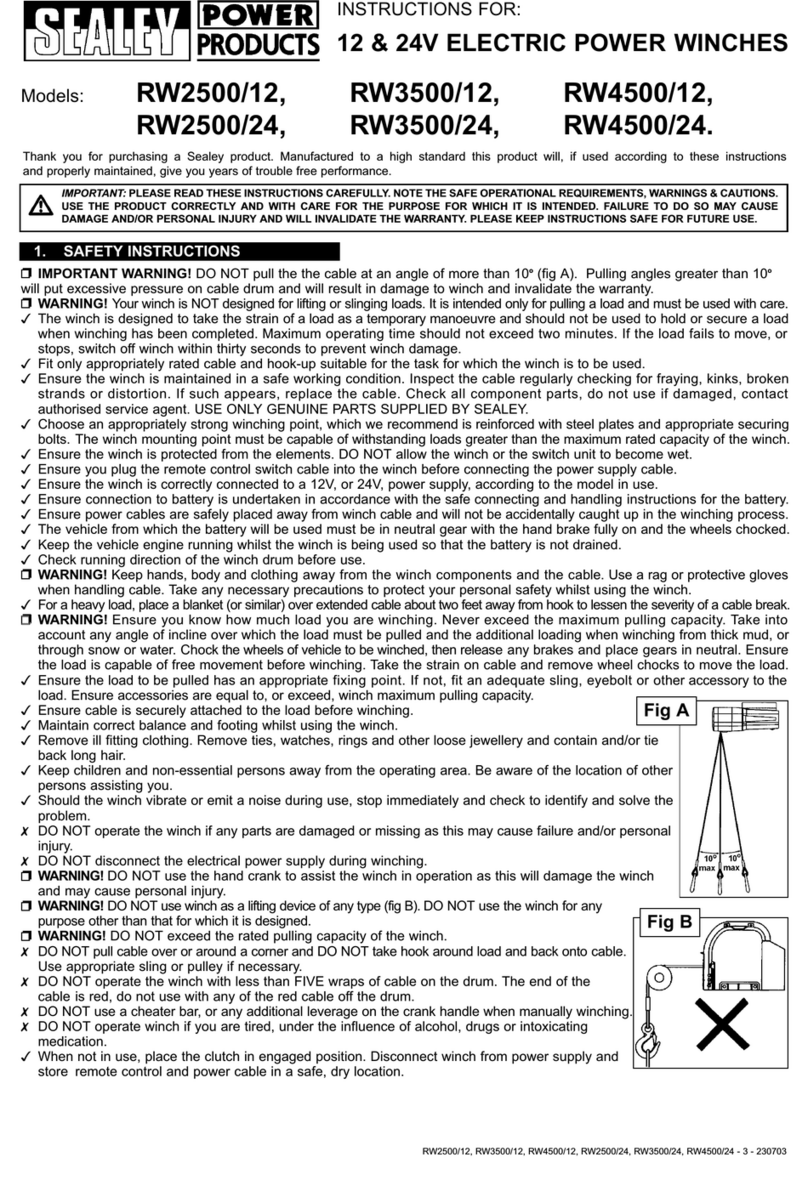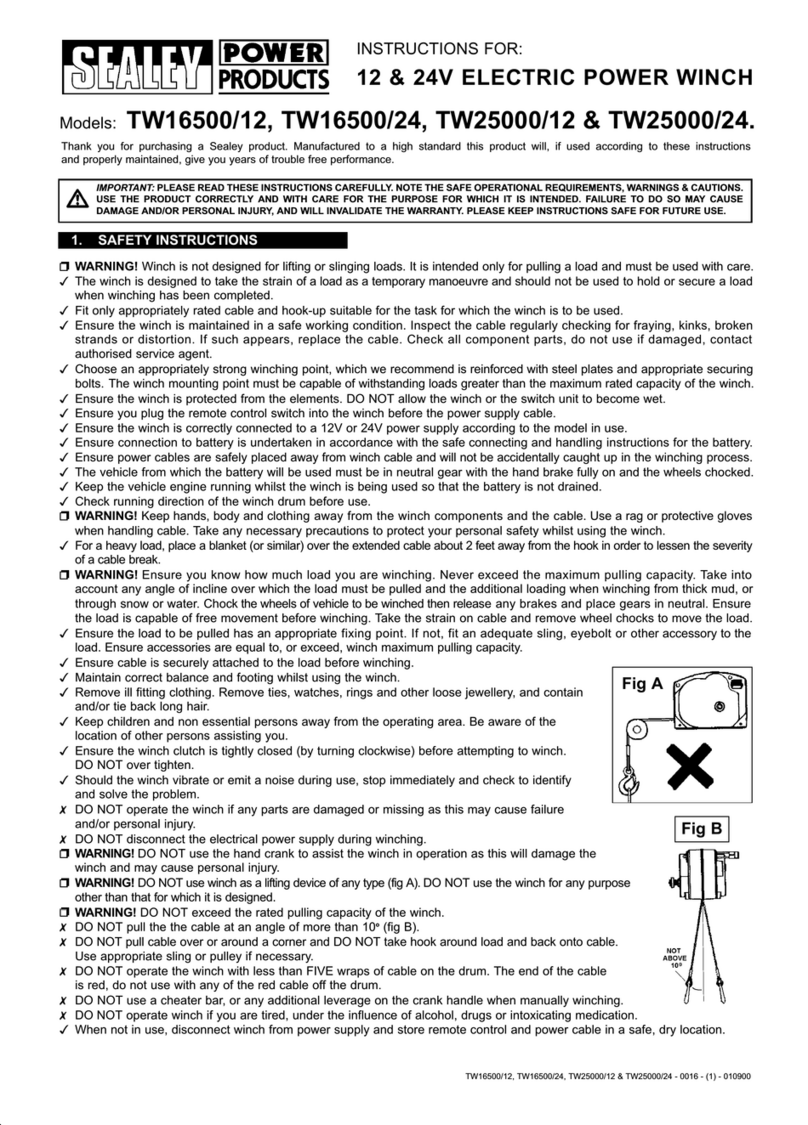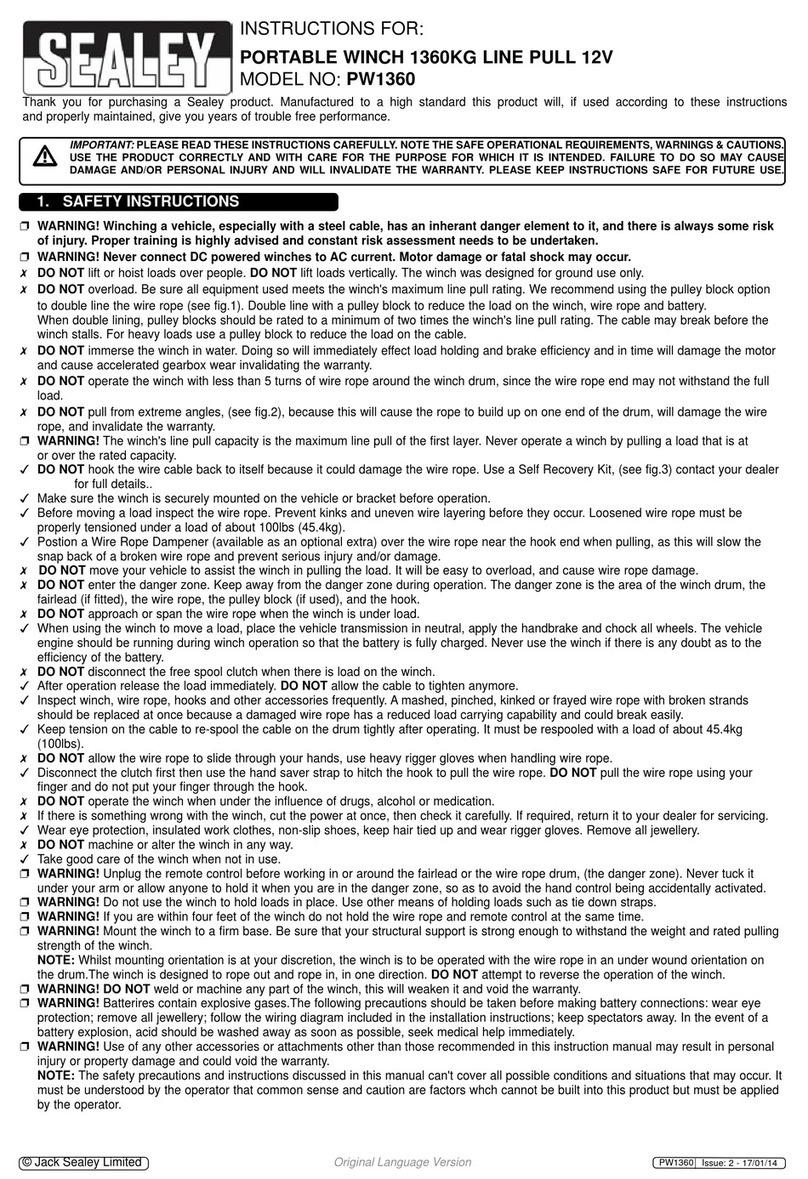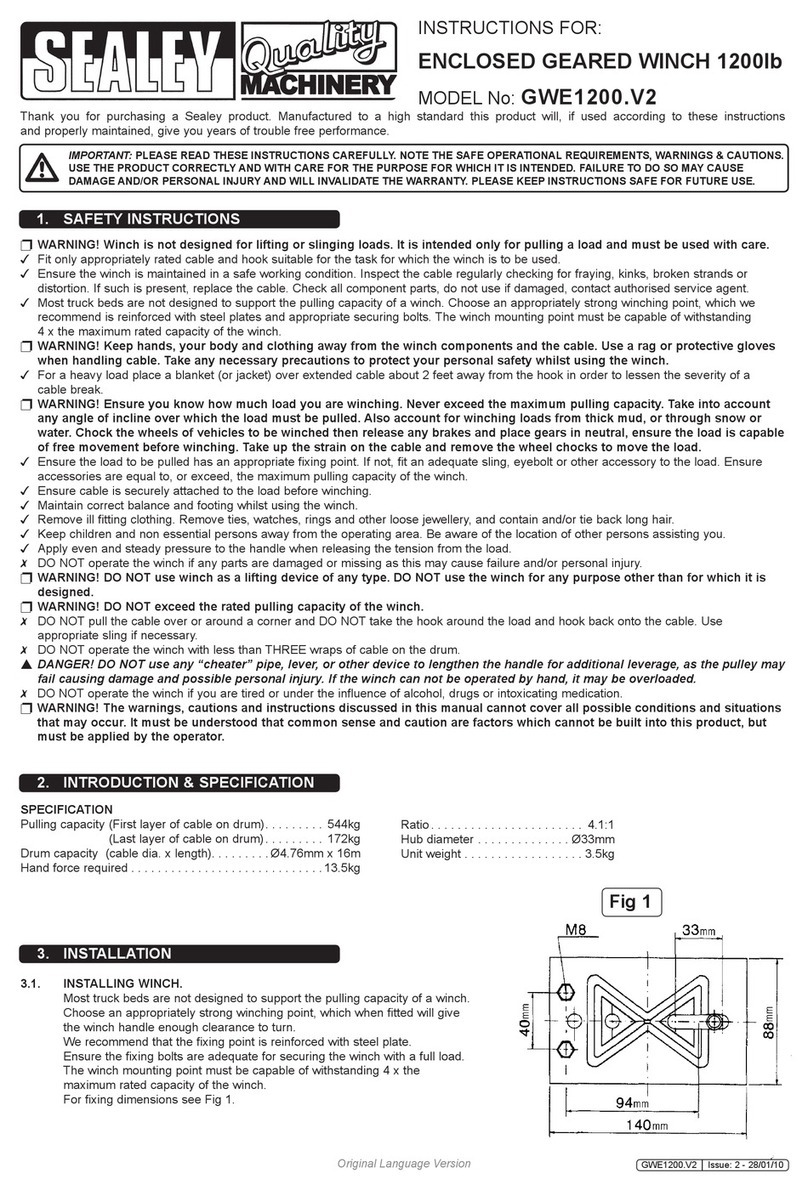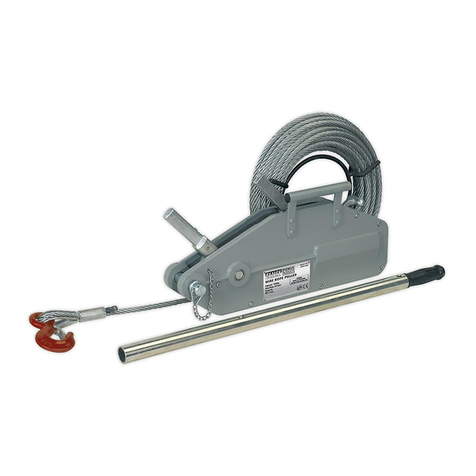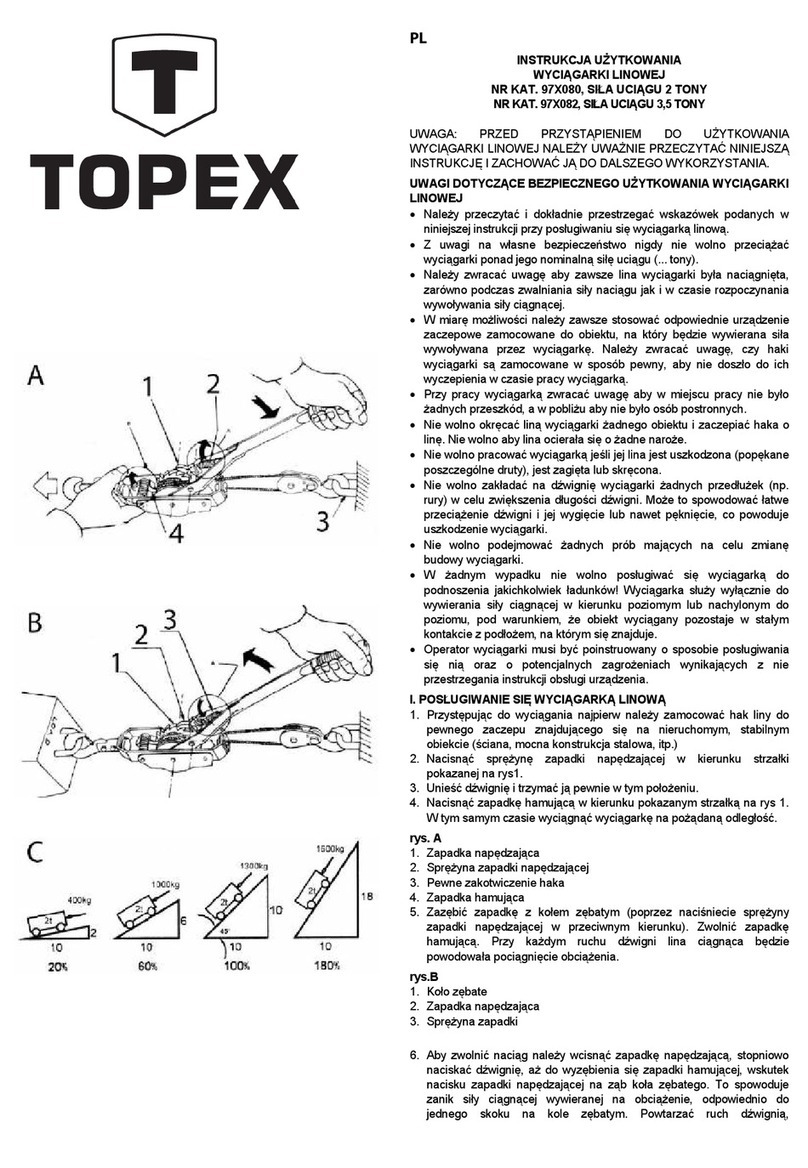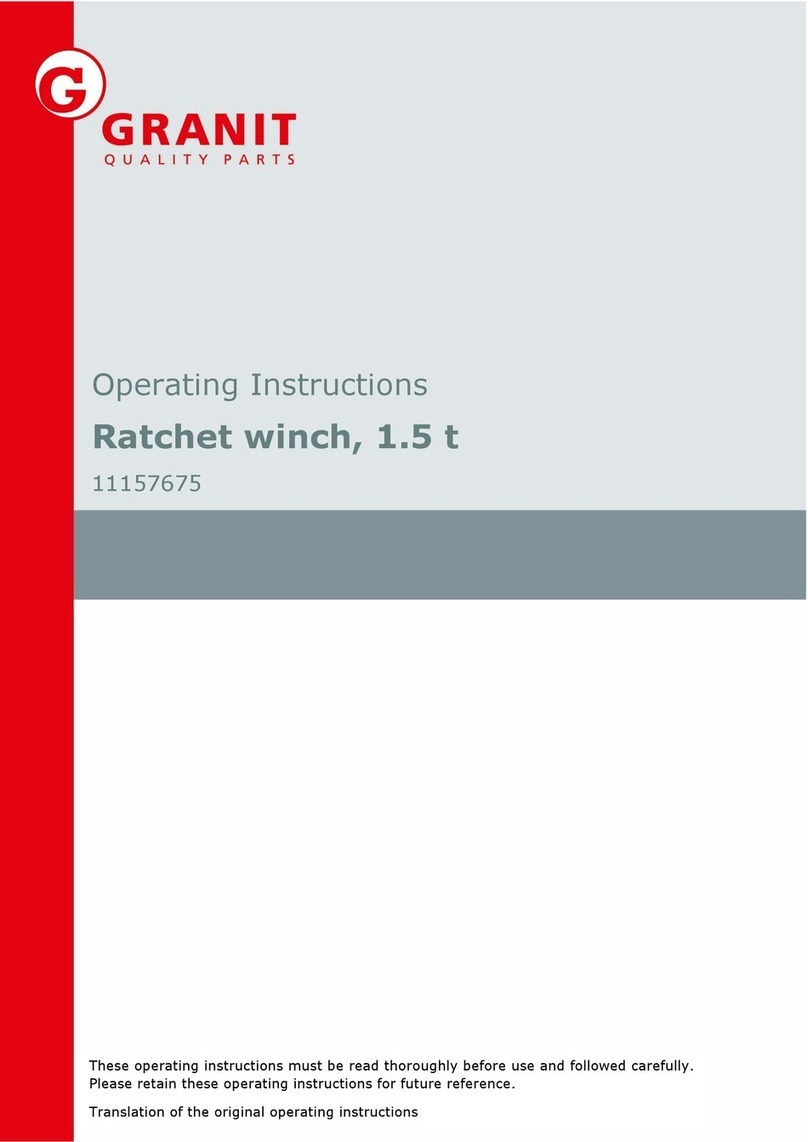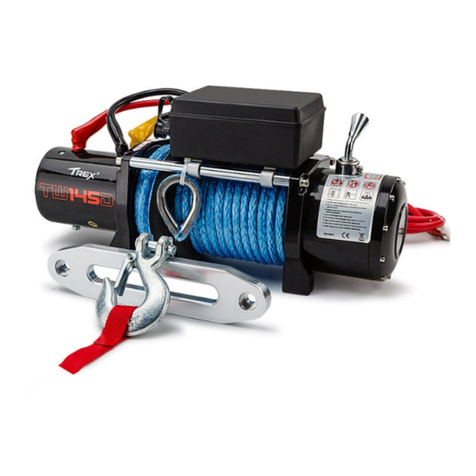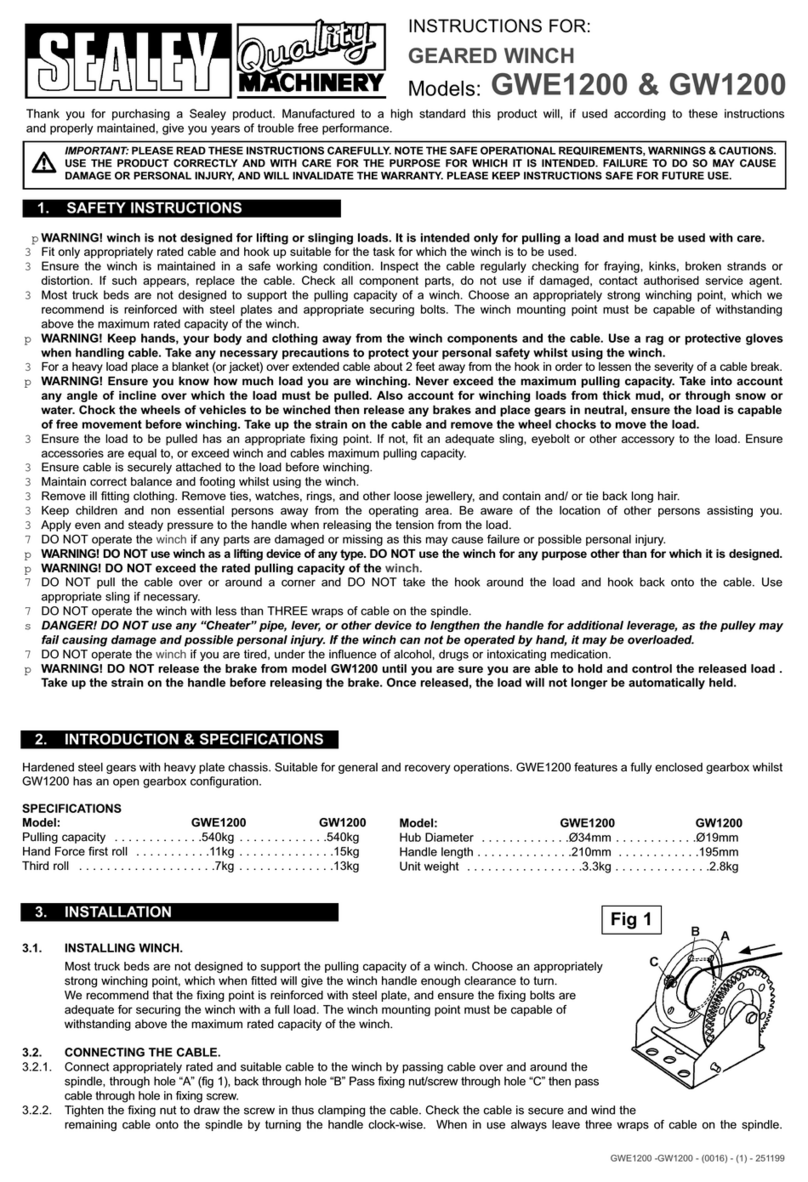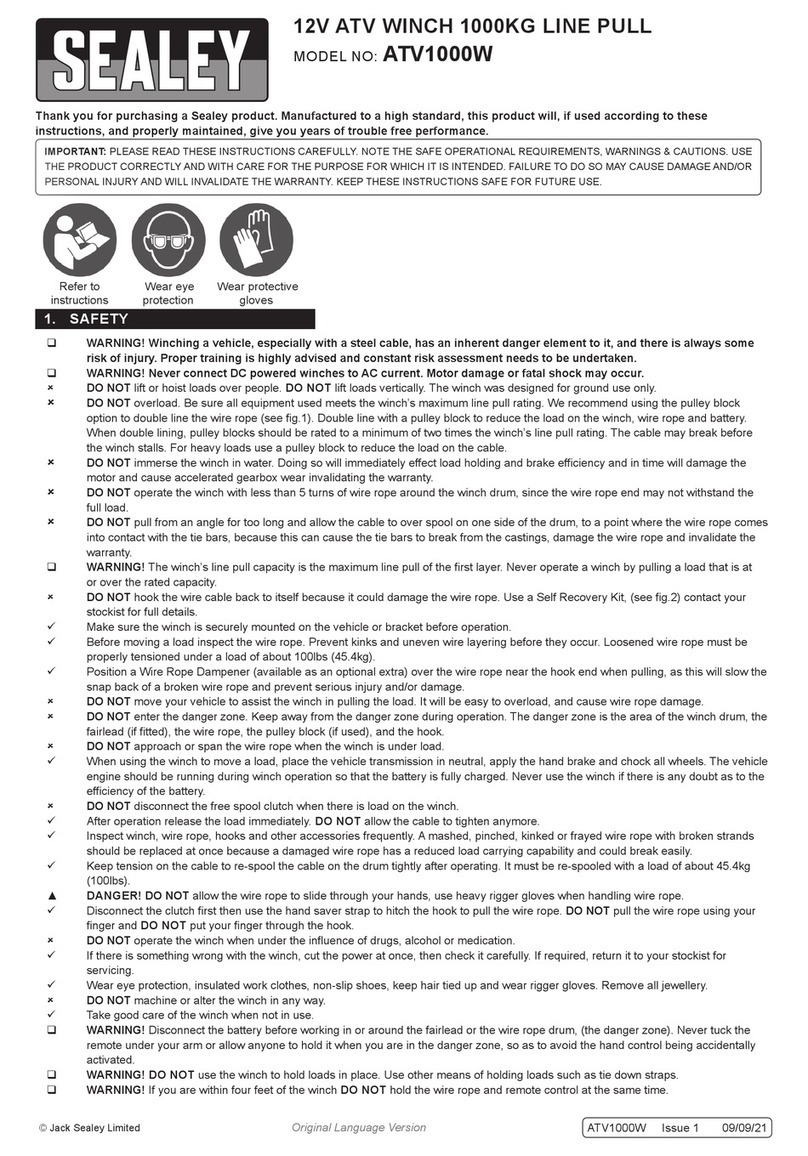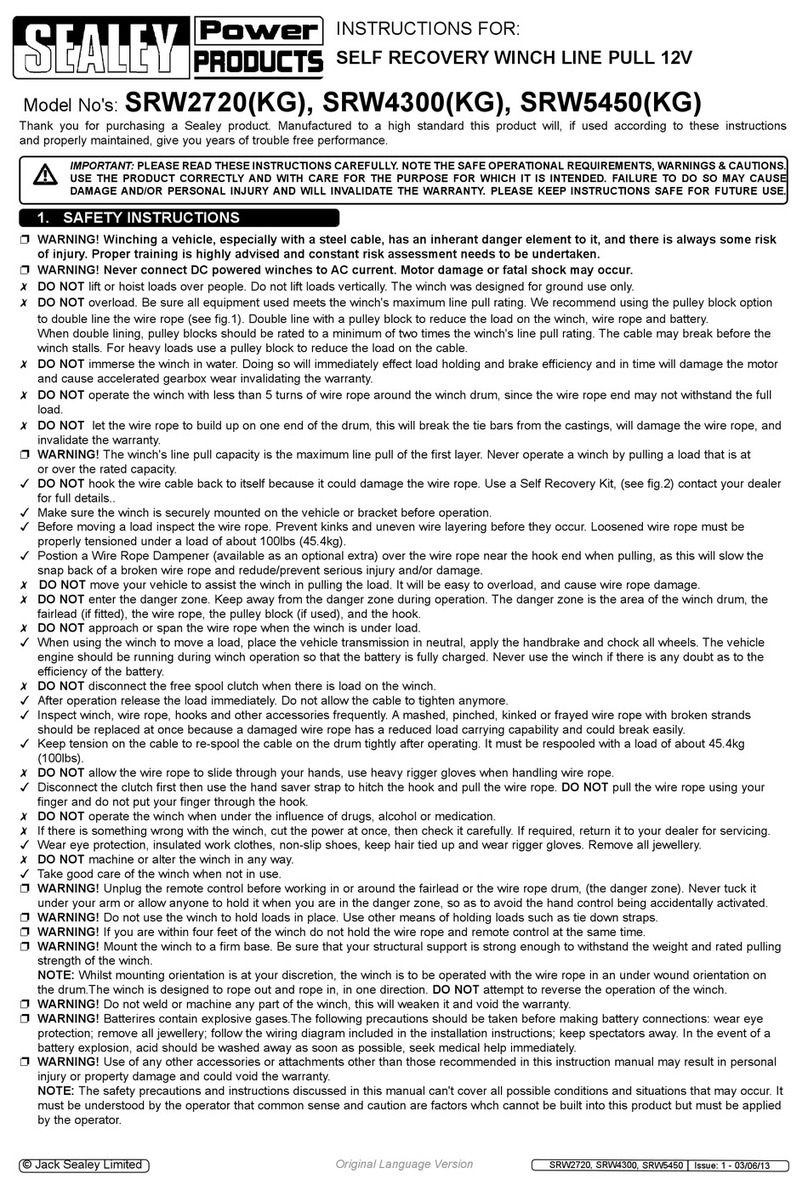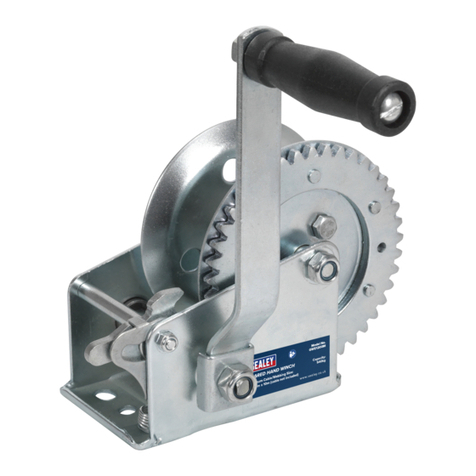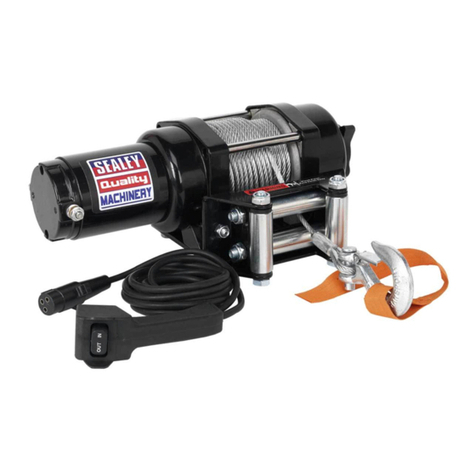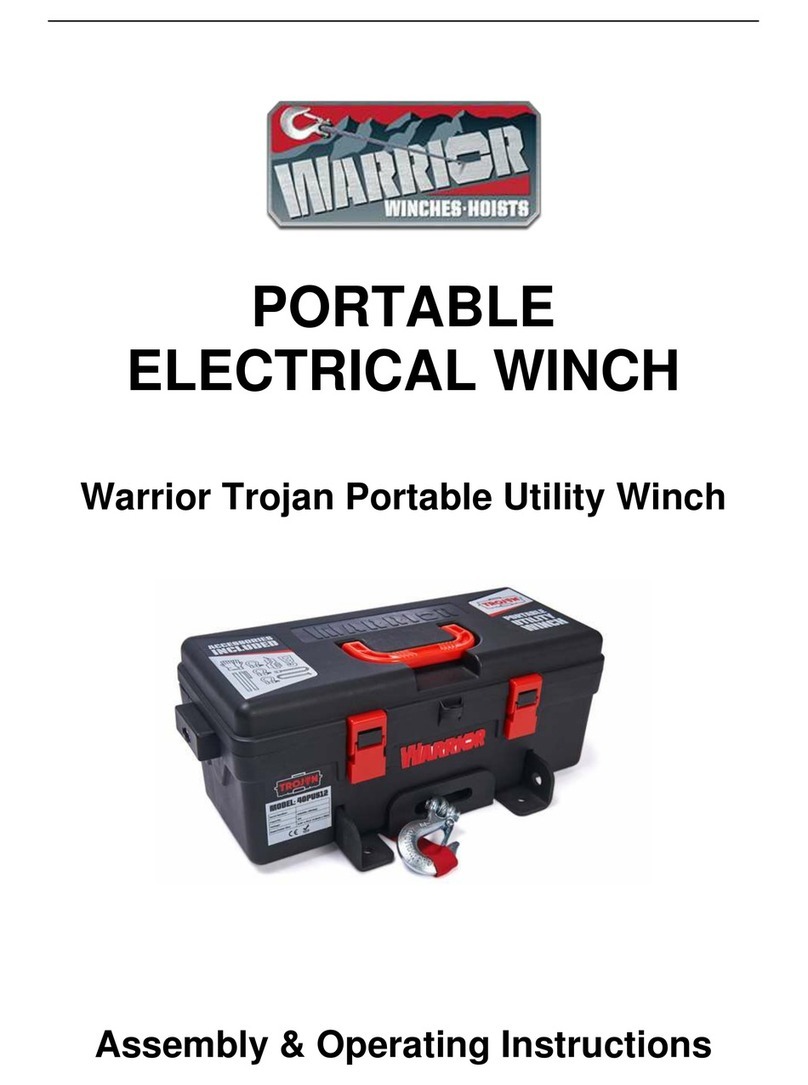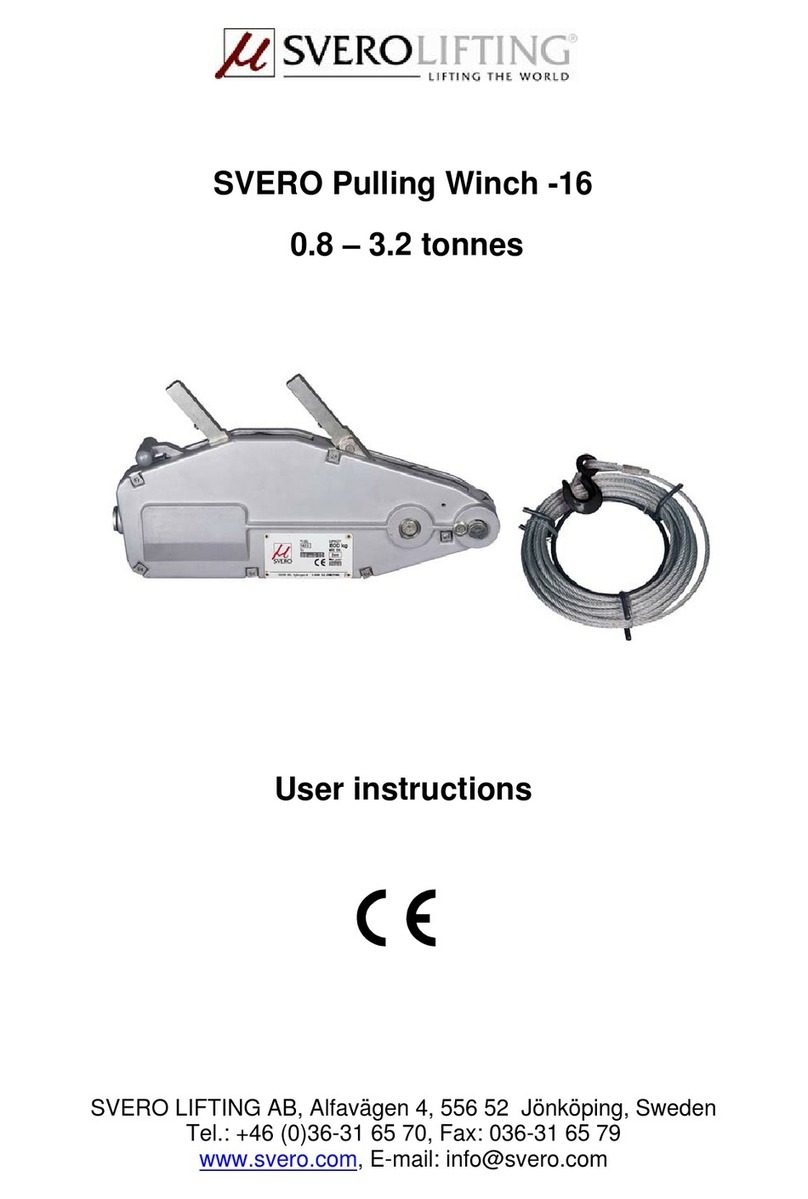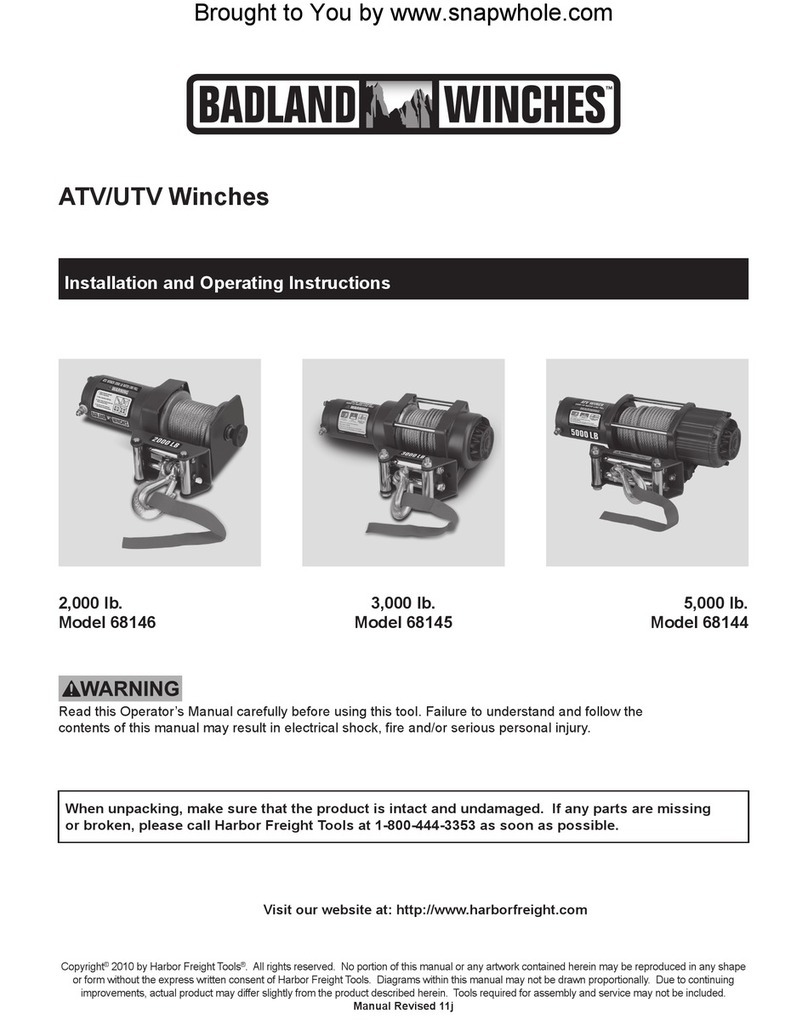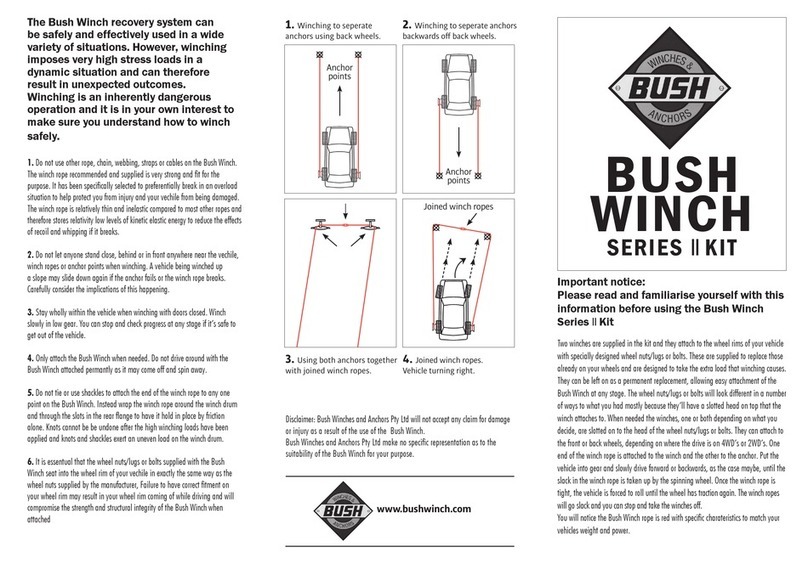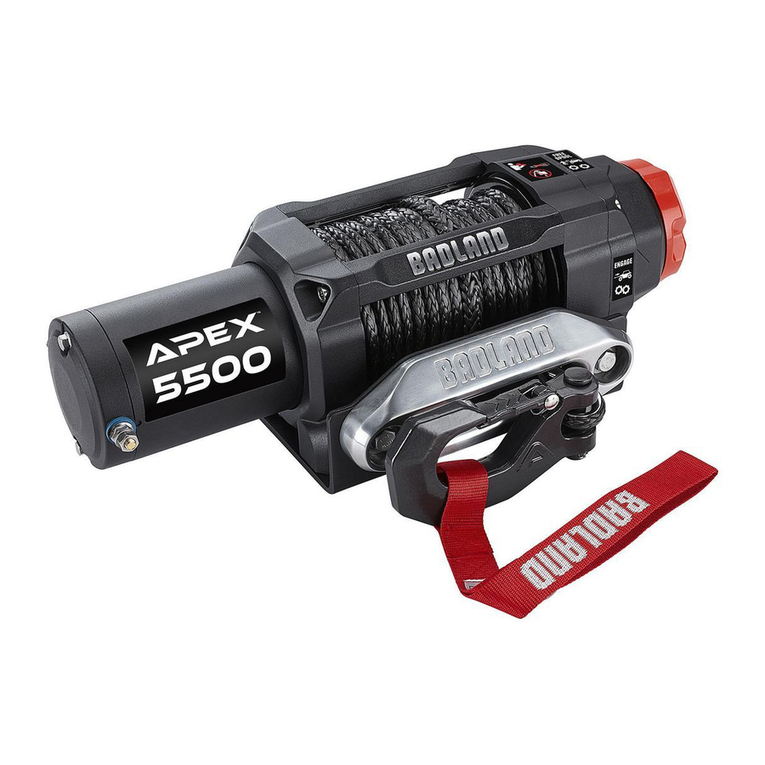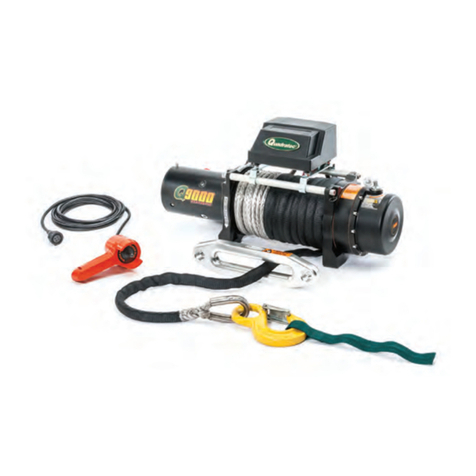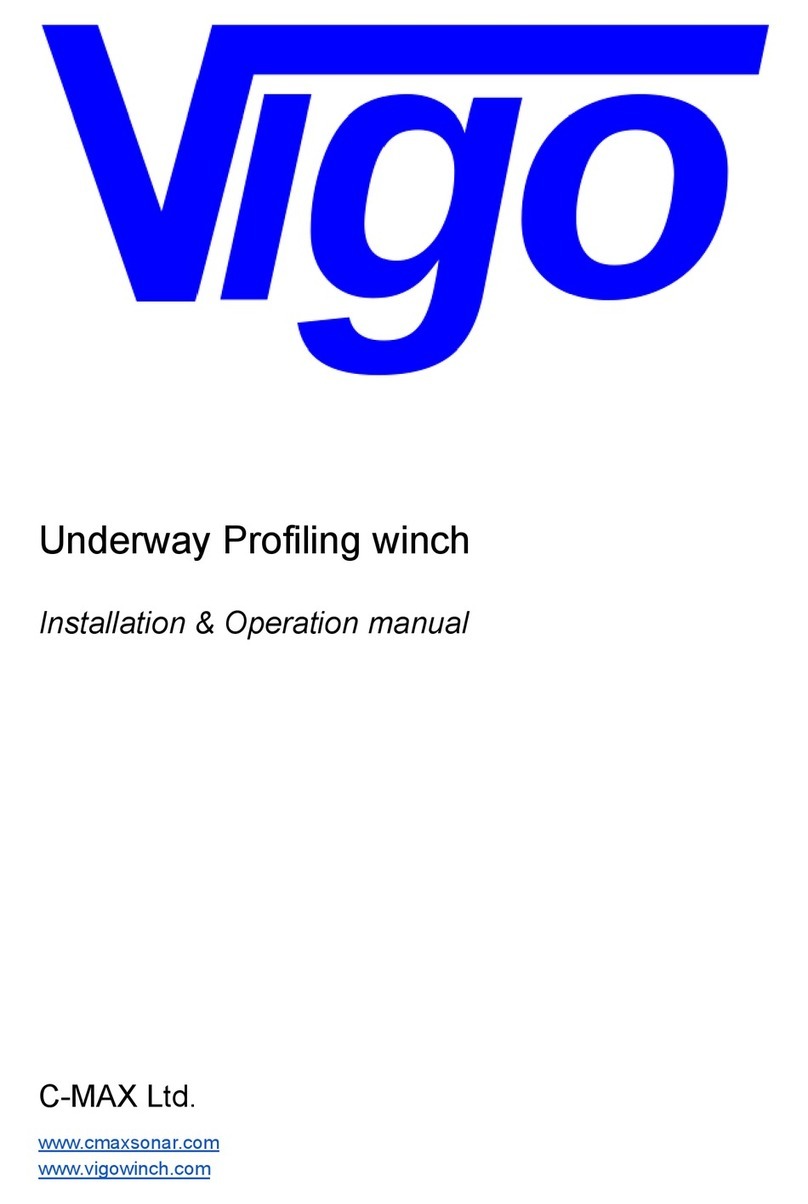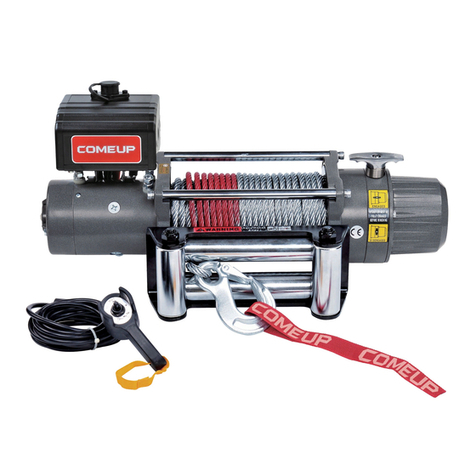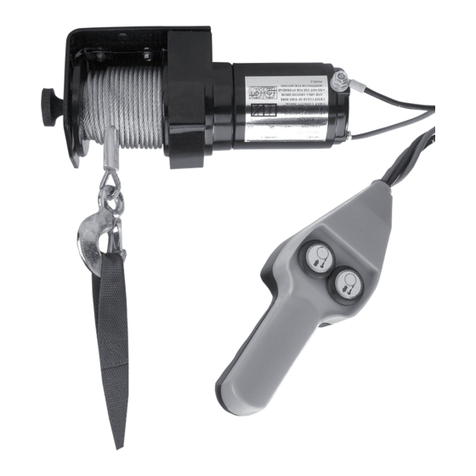
RECOVERY WINCH 12V INDUSTRIAL
MODEL NO: RW8180
Thank you for purchasing a Sealey product. Manufactured to a high standard, this product will, if used according to these
instructions, and properly maintained, give you years of trouble free performance.
IMPORTANT: PLEASE READ THESE INSTRUCTIONS CAREFULLY. NOTE THE SAFE OPERATIONAL REQUIREMENTS, WARNINGS & CAUTIONS. USE
THE PRODUCT CORRECTLY AND WITH CARE FOR THE PURPOSE FOR WHICH IT IS INTENDED. FAILURE TO DO SO MAY CAUSE DAMAGE AND/OR
PERSONAL INJURY AND WILL INVALIDATE THE WARRANTY. KEEP THESE INSTRUCTIONS SAFE FOR FUTURE USE.
1. SAFETY
WARNING! Winching a vehicle, especially with a steel cable, has an inherent danger element to it, and there is always some
risk of injury. Proper training is highly advised and constant risk assessment needs to be undertaken.
WARNING! Never connect DC powered winches to AC current. Motor damage or fatal shock may occur.
8DO NOT lift or hoist loads over people. DO NOT lift loads vertically. The winch was designed for ground use only.
8DO NOT overload. Be sure all equipment used meets the winch’s maximum line pull rating. We recommend using the pulley block
option to double line the wire rope (see fig.1). Double line with a pulley block to reduce the load on the winch, wire rope and battery.
When double lining, pulley blocks should be rated to a minimum of two times the winch’s line pull rating. The cable may break before
the winch stalls. For heavy loads use a pulley block to reduce the load on the cable.
8DO NOT immerse the winch in water. Doing so will immediately effect load holding and brake efficiency and in time will damage the
motor and cause accelerated gearbox wear invalidating the warranty.
8DO NOT operate the winch with less than 5 turns of wire rope around the winch drum, since the wire rope end may not withstand the
full load.
8DO NOT pull from extreme angles, (see fig.2), because this will cause the rope to build up on one end of the drum, this will break the tie
bars from the castings, will damage the wire rope, and invalidate the warranty.
WARNING! The winch’s line pull capacity is the maximum line pull of the first layer. Never operate a winch by pulling a load that is at
or over the rated capacity.
8DO NOT hook the wire cable back to itself because it could damage the wire rope. Use a Self Recovery Kit, (see fig.3) contact your
dealer for full details.
8Make sure the winch is securely mounted on the vehicle or bracket before operation.
8Before moving a load inspect the wire rope. Prevent kinks and uneven wire layering before they occur. Loosened wire rope must be
properly tensioned under a load of about 100lbs (45.4kg).
8Position a Wire Rope Dampener (available as an optional extra) over the wire rope near the hook end when pulling, as this will slow the
snap back of a broken wire rope and reduce/prevent serious injury and/or damage.
8DO NOT move your vehicle to assist the winch in pulling the load. It will be easy to overload, and cause wire rope damage.
8DO NOT enter the danger zone. Keep away from the danger zone during operation. The danger zone is the area of the winch drum, the
fairlead (if fitted), the wire rope, the pulley block (if used), and the hook.
8DO NOT approach or span the wire rope when the winch is under load.
8When using the winch to move a load, place the vehicle transmission in neutral, apply the handbrake and chock all wheels. The vehicle
engine should be running during winch operation so that the battery is fully charged. Never use the winch if there is any doubt as to the
efficiency of the battery.
8DO NOT disconnect the free spool clutch when there is load on the winch.
8After operation release the load immediately. DO NOT allow the cable to tighten anymore.
8Inspect winch, wire rope, hooks and other accessories frequently. A mashed, pinched, kinked or frayed wire rope with broken strands
should be replaced at once because a damaged wire rope has a reduced load carrying capability and could break easily.
8Keep tension on the cable to re-spool the cable on the drum tightly after operating. It must be re-spooled with a load of about 45.4kg
(100lbs).
8DO NOT allow the wire rope to slide through your hands, use heavy rigger gloves when handling wire rope.
8Disconnect the clutch first then use the hand saver strap to hitch the hook and pull the wire rope. DO NOT pull the wire rope using your
finger and DO NOT put your finger through the hook.
8DO NOT operate the winch when under the influence of drugs, alcohol or medication.
8If there is something wrong with the winch, cut the power at once, then check it carefully. If required, return it to your dealer for servicing.
8Wear eye protection, insulated work clothes, non-slip shoes, keep hair tied up and wear rigger gloves. Remove all jewellery.
8DO NOT machine or alter the winch in any way.
8Take good care of the winch when not in use.
WARNING! Unplug the remote control before working in or around the fairlead or the wire rope drum, (the danger zone). Never tuck it
under your arm or allow anyone to hold it when you are in the danger zone, so as to avoid the hand control being accidentally activated.
WARNING! DO NOT use the winch to hold loads in place. Use other means of holding loads such as tie down straps.
WARNING! If you are within four feet of the winch do not hold the wire rope and remote control at the same time.
WARNING! Mount the winch to a firm base. Be sure that your structural support is strong enough to withstand the weight and rated
pulling strength of the winch.
NOTE: Whilst mounting orientation is at your discretion, the winch is to be operated with the wire rope in an under wound orientation
on the drum. The winch is designed to rope out and rope in, in one direction. DO NOT attempt to reverse the operation of the winch.
RW8180 Issue 3 27/04/18
Original Language Version
© Jack Sealey Limited
Refer to
instructions
Wear eye
protection
Wear protective
gloves
